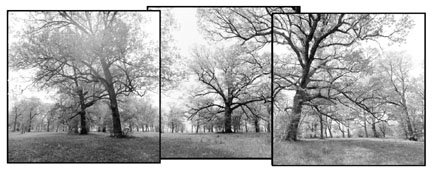Welcome: This section of the website deals with the subject of photography as expressed by different viewpoints by different members. Individual galleries are incorporated into trip reports, or other subject headings. External galleries by ENTS members are included as links in their bios in our ENTS people section of the website. On March 14, 2010 The Eastern Native Tree Society and Western Native Tree Society switched from discussion lists on Google Groups to a new discussion list in a Bulletin Board format at: http://www.ents-bbs.org/index.php Posts made since the inception of the BBS on march 14, 2010 will be sorted and archived on the BBS. Click on the link above to go to the equivalent section on the new BBS. This website will continue to serve as a front end for the ENTS and WNTS groups. It will continue to serve as a repository of older posts, and will serve as the host site for special projects and features that are not well suited for a BBS format. Please visit the BBs for the latest information and trip reports.
Feature Article: Miles Lowry
Many
years ago I was struck by a photograph made by Lois Conner of a
“national champion” tree near Cleveland, Ohio. All that was included
in the frame was about the first ten feet of its trunk…no attempt was
made to document the whole of the tree’s mass. She knew, as well as
any other person who struggles with making an effective image of tall
things, that pointing one’s camera up distorts the size of objects
farthest away. James
Balog advanced our photographic awareness of tall trees by climbing
their neighbor and “shooting” the subject as he ascended. He then
combined the tens of images during his ascent to make what I call an
“assembly” of the whole without the vertical distortion. Bob Van
Pelt and his collaborators did the same in his book of Pacific Northwest
giants. By using illustration rather than photography, Van Pelt was able
to eliminate distracting visual details surrounding the subject tree. My
approach is a bit different than either of those folks. I make no
attempt at trying to show the whole of the Eastern forest giants I find.
(Though I think Balog’s approach is a stroke of genius!) My
images of both forests and savannas are made of various combinations of
square images captured with my medium format Hasselblad. I use old style
film. After developing it chemically, I scan the negative and improve
the images digitally. Instead of hiding the dark film edges when I
combine the images in Photoshop, I emphasize them.
One
of the important dynamics of any photograph is that for every exposure
there is point of focus that can either be reduced or increase using
certain camera controls. Each frame has a point of interest that is
oftentimes a result of where the photographer has focused the camera. My
images that are made of more than one frame have multiple “planes of
focus”. I use a narrow depth of focus (depth of field) for each frame
and guide the viewer through the assembled image by shifting each
frame’s focal point. Sadly, these small images viewable on the web
cannot show the detail that is so important. Another
technique I use is the classic Zone System developed by Ansel Adams so
many years ago. By exposing the film for the shadows and developing it
for the highlights, I can extend the range of tones I can print beyond
what can be captured conventionally. In addition, “post production”
tonal controls available to me in Adobe Photoshop give me a greater
range of tones than normal in my black and white images. Many forest
images have either overly bright sunlit areas or overly dark shadows. It
is the classic exposure problem when shooting in dappled forest locales.
Happily, I can capture the extremes in scenes that most photographers
cannot. Lately,
the architecture of white and bur oaks in my region of the Midwest have
captured my attention. It seems to me that the next chapter of my work
should include the live oaks of the South. But above all else, I try to
capture the incredible species complexity of eastern forest sites. Feel
free to contact me with any comments or questions at milesjlowry@gmail.com Miles
Lowry Discussions
Will Blozan Edward Frank Jarrid Spicer Bob Leverett
John Parker
|
